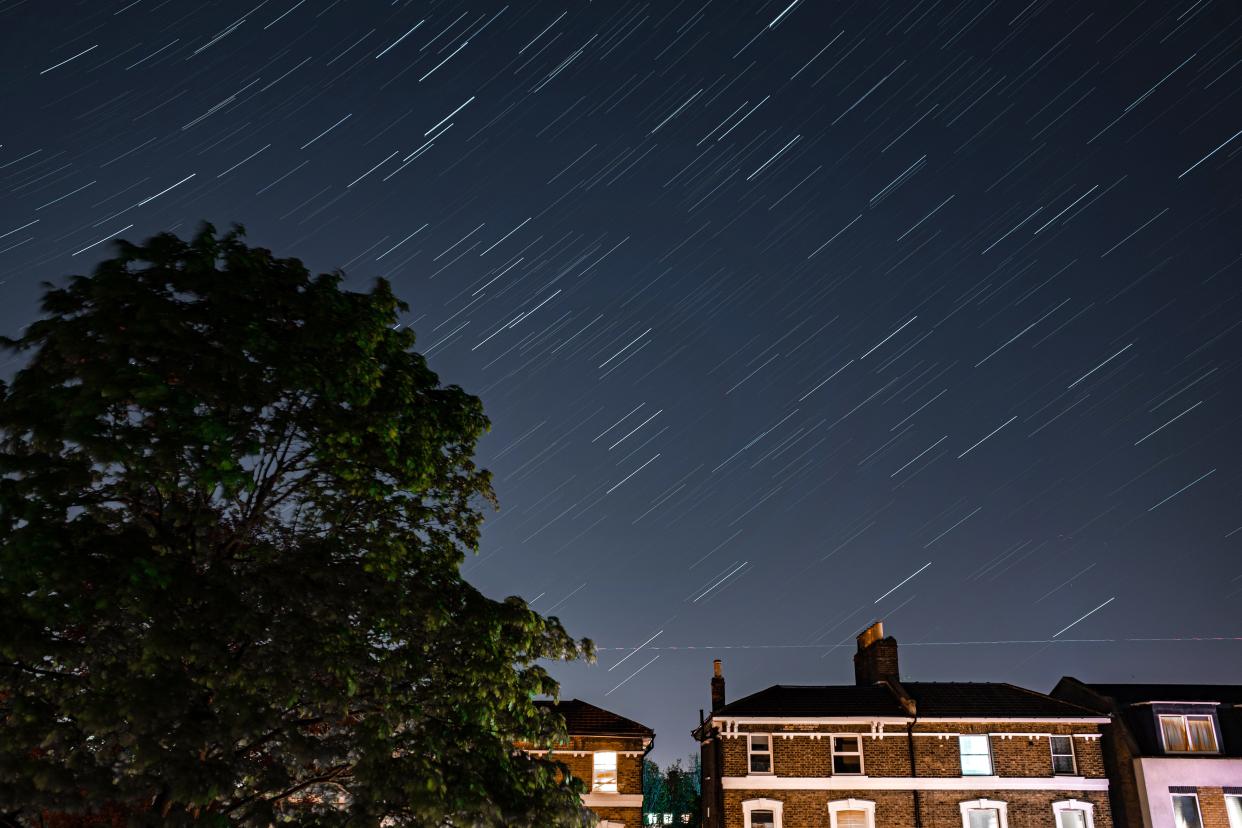Where is the Lyrid meteor shower visible? What to know and how to see it in Tennessee
Nashville didn't experience the solar eclipse in its totality, but another celestial event is set to happen in just a few days. This time, its visibility won't depend on your location.
The Lyrids meteor shower, one of the oldest known meteor showers, occurs during late April and can be seen around the world. According to NASA, the Lyrids are known for their fast and bright meteors, the meteors travel at a speed of 29 miles per second.
"In general, 10-20 Lyrid meteors can be seen per hour during their peak," said NASA. "Lyrids don’t tend to leave long, glowing dust trains behind them as they streak through the Earth's atmosphere, but they can produce the occasional bright flash called a fireball."
The meteor shower begins on April 15 and concludes on April 29, according to Earthsky.org, however their peak can be enjoyed between April 21 and April 22.
Here's what else to know about the upcoming meteor shower.

What time will the Lyrids meteor shower be visible?
According to NASA, the Lyrids are best viewed in the Northern Hemisphere, the northern half of the Earth. After moonset and before dawn will be the best time to view the meteor shower.
More reasons to look up: With the 2024 eclipse over, when is the next celestial event?
How to best observe the Lyrids meteor shower?
According to Earthsky.org, a waxing gibbous moon will interfere with the Lyrids meteor shower. On April 22, the moon will be 50% illuminated, not yet a full moon. However, that doesn't mean the meteor shower viewing experience will be hindered.
Earthsky.org recommends avoiding city lights, locating a moon shadow and making your shower viewing experience as comfortable as possible with blankets, a lawn chair and comfortable clothing.
"Ensconced within a moon shadow, and far from the glow of city lights, the night all of a sudden darkens and can help you see more meteors," said Earthsky.org. "You can’t run from the moon, but you can sure hide from it."
Where do the Lyrid meteors come from?
Meteors come from leftover comet particles and broken asteroid bits. When comets come around the sun, they leave a dusty trail behind them, said NASA. The Earth passes through the debris trails annually which allows the bits to collide with our atmosphere where they disintegrate to create fiery, colorful streaks in the sky.
The pieces of space debris that interact with the Earth's atmosphere to create the Lyrids, originate from comet C/1861 G1 Thatcher. The comet was discovered on April 5, 1861, by A. E. Thatcher.
Diana Leyva covers trending news and service for The Tennessean. Contact her at Dleyva@gannett.com or follow her on X, the platform formerly known as Twitter at @_leyvadiana
This article originally appeared on Nashville Tennessean: What is the Lyrid meteor shower and how to see in Tennessee?
